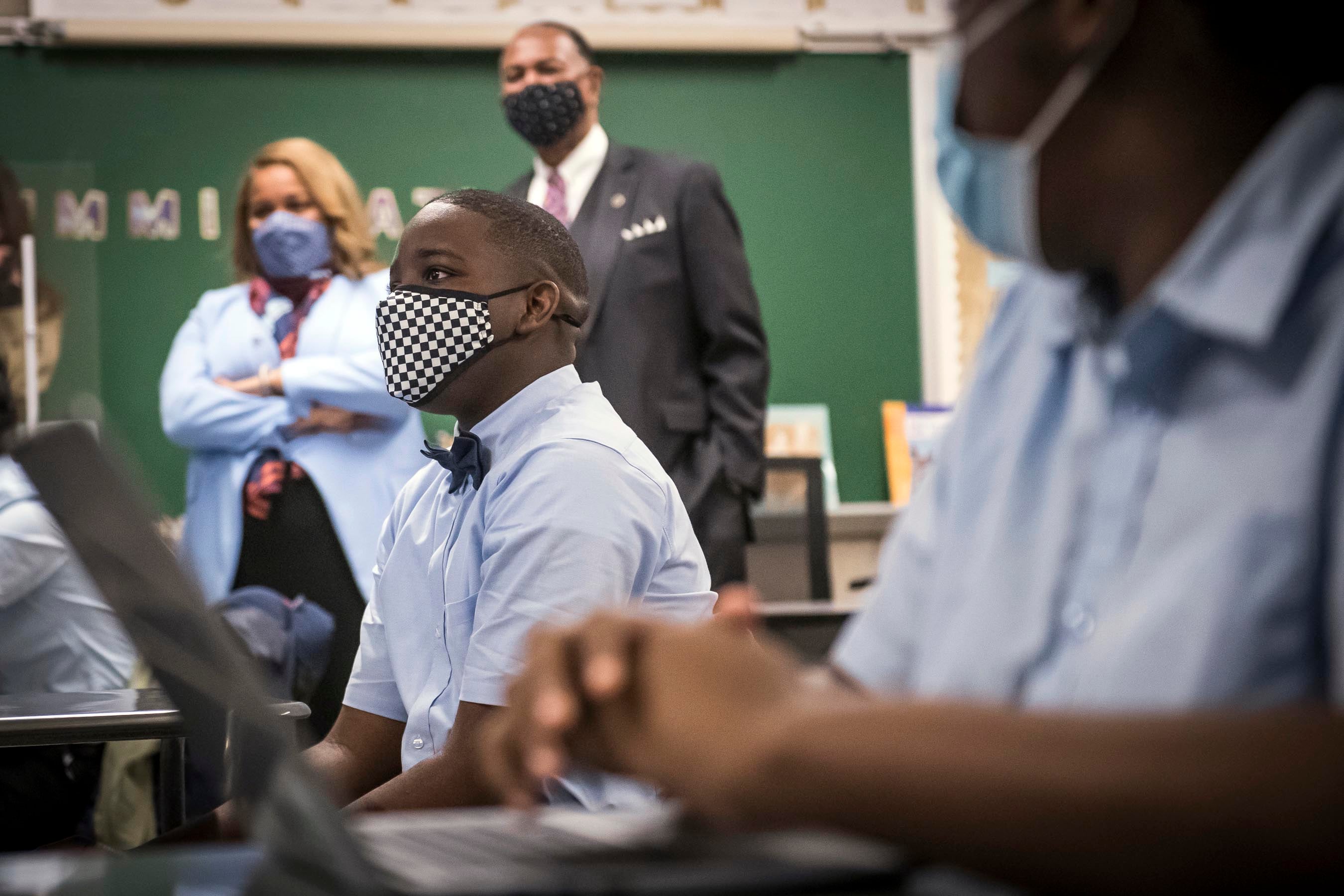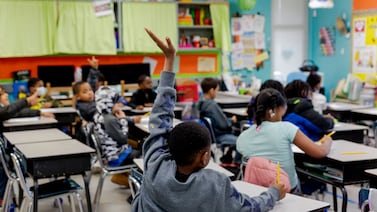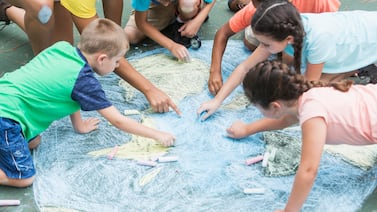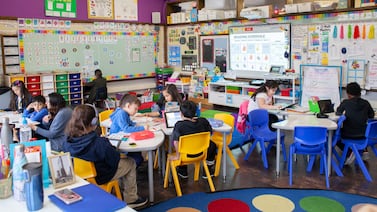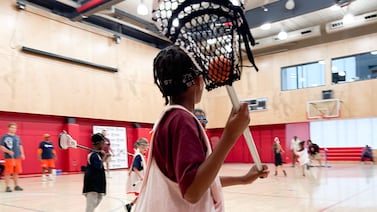For students who must quarantine when their classmates can remain in school, their teachers must provide “office hours” instead of live instruction, education department officials announced Wednesday.
“Office hours” can mean multiple things — answering a student’s questions, individual or small group tutorials, check-ins on assignments, according to education department spokesperson Sarah Casasnovas.
Office hours will largely be for middle and high school students, who will have different quarantine rules from those in elementary schools, said Lauren Siciliano, the department’s chief administrative officer, during a Wednesday City Council hearing on school reopening.
Teachers will be paid overtime to dedicate two hours a week toward office hours for quarantined students, earning more if they teach multiple courses with students staying home, Casasnovas said. They will also receive $225 to set up “digital classrooms” for remote learning, and will receive four hours in overtime pay if more than half of their students are in quarantine at a given time, according to the agreement with the teachers union obtained by Chalkbeat.
Though Mayor Bill de Blasio said he anticipates fewer quarantines this year, if other parts of the country are any indication, teachers may end up needing to devote time and attention to a significant number of students.
At the hearing, schools Chancellor Meisha Porter said school officials have been working closely with the union to hammer out the details of remote instruction during quarantines. Casasnovas confirmed that negotiations are complete with the union over remote instruction requirements. Union officials did not respond to multiple requests for comment.
“We’ve been really working with our union partners to answer those questions,” Porter said. “The commitment to continuing instruction for our students throughout, in a quarantine, is there from all of us.”
Teachers — who are required to have at least one vaccine dose by Sept. 27 — can hold the office hours during their preparation period, during lunch time, or after school, Casasnovas said.
Who will have office hours?
Many schools may have a challenging time figuring out how they will provide office hours when entire classrooms don’t have to shut down but some children might be in quarantine.
In middle and high schools, vaccinated students won’t have to quarantine following exposure to an infected person in a classroom, as long as they’re not showing symptoms, but their unvaccinated peers will have to isolate for up to 10 days. They will have an option to return after a week as long as they have a negative COVID test after five days in isolation.
This could get complicated, since students in older grades move from class to class with different students.
The city is trying to ensure as many eligible children are vaccinated, so as part of the city’s vaccination push for children, all schools with students ages 12 and older will provide vaccines (with parental consent) during the week of Sept. 13, when students return, officials also announced on Wednesday.
Second doses will be provided at those same schools the week of Oct. 4.
The rules around remote instruction are more straightforward in elementary school where children are too young to be vaccinated: if a positive COVID case arises, the entire class must quarantine and instruction will shift to remote.
There are no requirements for how much live instruction teachers must provide in the case of full classroom or school closures, according to the agreement between the city and the union. Teachers and other mandated related service providers will be required “to share content via these classrooms that is necessary to effectively engage students and provide instruction during the emergency closure.”
Additionally, there may be situations where just one student in an elementary school class will have to quarantine, depending on how they were exposed, and they would receive office hours, Casasnovas said.
Teachers scratch their heads
If teachers are overseeing multiple courses with quarantined students, they can divide their allotted time for office hours equally among those classes. For example, a teacher with two partially quarantined classes could devote 90 minutes of office hours to both.
Many teachers said they were initially blindsided by the news.
Mike Loeb, a middle school science teacher at the Urban Institute of Mathematics in the Bronx, wondered how schools would build in office hours for quarantined students into their existing schedules.
“Schools have already made their schedules,” he wrote in a text message. “Office hours didn’t exist before COVID so the only template we have is what we did during COVID, when office hours came at the expense of instructional time.” He noted that the school might have to repurpose time that is typically reserved for training and other activities.
Nate Stripp, an eighth grade social studies teacher at M.S. 50 in Brooklyn, said his school is planning to hold individual Zoom rooms for students in the same grade who are required to quarantine. They would place “remote coaches” in those virtual rooms to help students and ensure they are “with an adult,” he said. Those coaches would be a range of staffers, including paraprofessionals and substitute teachers.
But it’s unclear to Stripp whether that plan would meet the city’s requirements without any further information from the education department or the union. He’s also unsure how teachers would plan for office hours with a full in-person schedule this year.
“If we are teaching full loads and doing office hours, I want to see a more specific plan for that,” Stripp said. “Really, I would like to see a more fleshed out policy about all of this — that would be particularly helpful for all of us involved so that we can make our plans concrete.”
Debate over a remote option continues
School officials promised that students would have the technology needed to shift to remote learning. At the City Council hearing, officials said they’ve purchased an additional 175,000 devices, which are a mixture of internet-enabled iPads and Chromebooks, to distribute to schools in need of them. They could not say how many device requests are currently unfulfilled.
Multiple council members asked Porter why remote instruction is not an option for the fall, echoing calls from families over the past several months. They said families should have the option, pointing to the highly transmissible delta variant of COVID and protecting students who aren’t eligible for vaccines.
Porter and Health Commissioner Dave Chokshi reiterated that they didn’t think a remote option was necessary for most students in the face of the city’s multiple layers of protection in schools, including masking, social distancing where possible, improved ventilation, and testing 10% of each school twice a month.
Porter also said she heard the most concerns from families with medically fragile students, who will be eligible for a remote instruction.
She also said the system is prepared to shut down entirely, if necessary.
“If cases rise and we have to go remote, we are prepared to do that,” Porter said.
Alex Zimmerman contributed.

